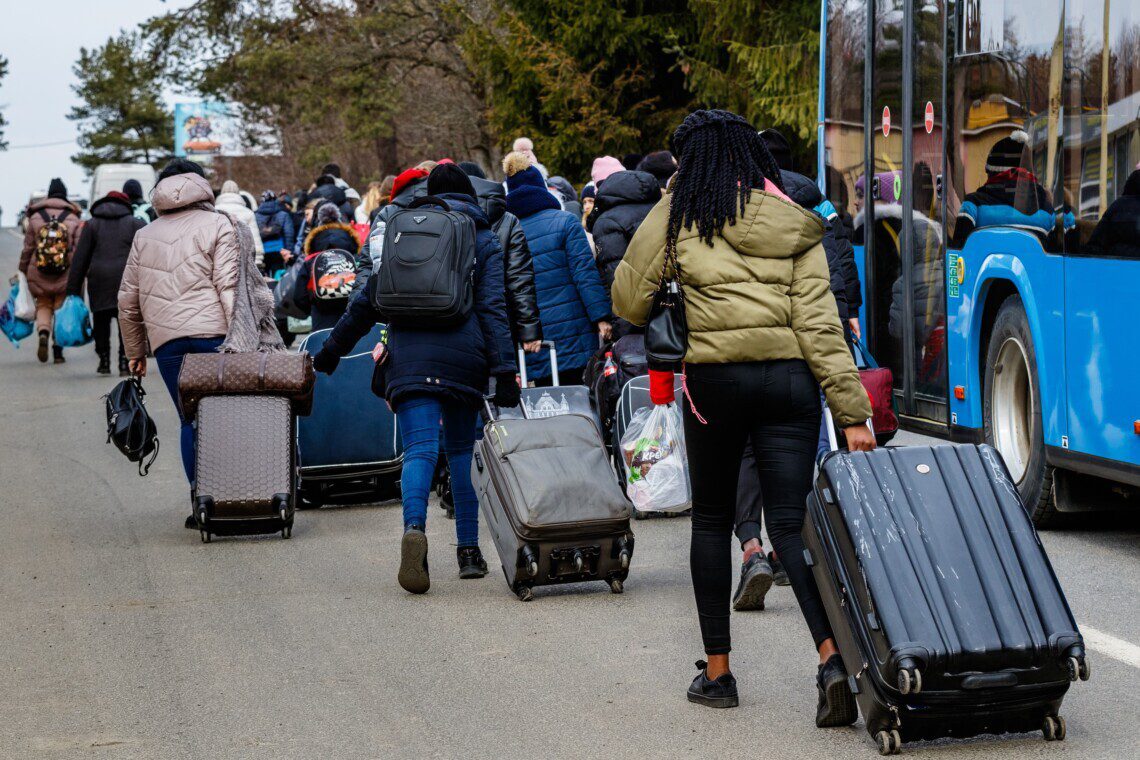Russia’s aggression against Ukraine has caused the largest wave of refugees in Europe since World War II, and Ukraine’s demographic losses are one of the main goals of Russian aggression.
Killer statistics
According to the United Nations High Commissioner for Refugees, more than 6.2 million Ukrainians have fled abroad since the beginning of the war. Although there is debate about the exact scale of migration, with some estimates as high as 8 million migrants, the UN data is considered the most comprehensive, as it is based on access to information from many countries. However, any of these figures is a big problem for Ukraine.
More than a third of all Ukrainian refugees abroad are minors. At the same time, the percentage of children among Ukrainian refugees abroad is higher than among internally displaced persons in Ukraine. Instead, there are many more elderly people among IDPs. This means more labor for foreign countries and more budgetary expenditures for Ukraine.
Ukrainian migrants are actively adapting abroad, primarily in Europe: they find employment, take on any job, and send their children to school. Ukrainians are beginning to build new social ties, develop career prospects, learn the language, and make friends. Other perspectives not related to Ukraine are beginning to emerge. For many migrants, Ukraine, with its frequent air raids, shelling, power outages, mobilization and the threat of a repeat Russian invasion from the north, has become a difficult country to return to, and many of our compatriots plan to stay in new countries forever. This also contributes to the realization of the Russians’ goals to reduce the number of Ukrainians by any means, including through their dispersion and assimilation around the world.
For EU countries, Ukrainian migrants have often become more of a bonus than a cost. Ukrainians partially compensated for the shortage of labor in the EU and started paying taxes in the host country. According to the NABU, in 2022, the financial expenditures of Ukrainians in Europe increased to $2 billion a month. The Center for Migration Studies at the University of Warsaw estimates that employed Ukrainians in Poland have already paid 10 billion zlotys (about $2.4 billion) in taxes. This exceeds the amount of aid provided, although this amount does not take into account the costs of education and health care. Experts from the Organization for Economic Cooperation and Development estimate the additional contribution of Ukrainians to the annual GDP growth rates of the Czech Republic, Poland, and Estonia at 1.2% per year, and the contribution of migrants to the GDP of Hungary, Latvia, Slovakia, Lithuania, and Romania at almost 0.8%.
Europe has received migrants it could only dream of: millions of new citizens who seek to quickly integrate into a new society, do not settle in ethnic ghettos, do not conflict over religious and cultural differences, and do not organize street protests with pogroms and violence.
At the same time, Ukraine is suffering losses that could set the Ukrainian economy back decades. Dmytro Livch, head of the analytical department at the Center for Economic Recovery, notes that “If we do not start creating conditions for the return of forced migrants now, Ukraine may lose up to $113 billion in GDP over 10 years, which could also mean a shortfall of about $45 billion in tax revenues.” If Ukrainian refugees do not return home, the Ukrainian economy could lose up to 8% of its GDP. Deputy Minister of Economy Oleksiy Sobolev notes that “Every 200,000 people who do not return to Ukraine reduces GDP by 1%.”
Who will come back?
According to the UN High Commissioner for Refugees, only 28% of the total number of Ukrainian emigrants have found employment in the EU. About a third of our citizens are forced to perform less skilled labor than in Ukraine or to take lower-paid jobs. This creates grounds for the return of some compatriots after the war.
The Ministry of Economy expects about 3 million refugees to return to Ukraine in the first year after the war, 1.5 million in the second, and about ¾ of those who left Ukraine because of the war. At the same time, sociologists note that older people and those who had a good job before the war are more likely to return. Among those who announced plans to return after the war, the majority are those who faced domestic difficulties in their place of residence. First of all, these are people who live in shelters, rely on social benefits as their main source of income, and have problems with the language barrier.
At the same time, the UN notes that those who have temporarily returned and visited their homes at least once are more likely to return. Family and living in their cultural environment are important factors for Ukrainians to return.
Author: Valeriy Maydanyuk

